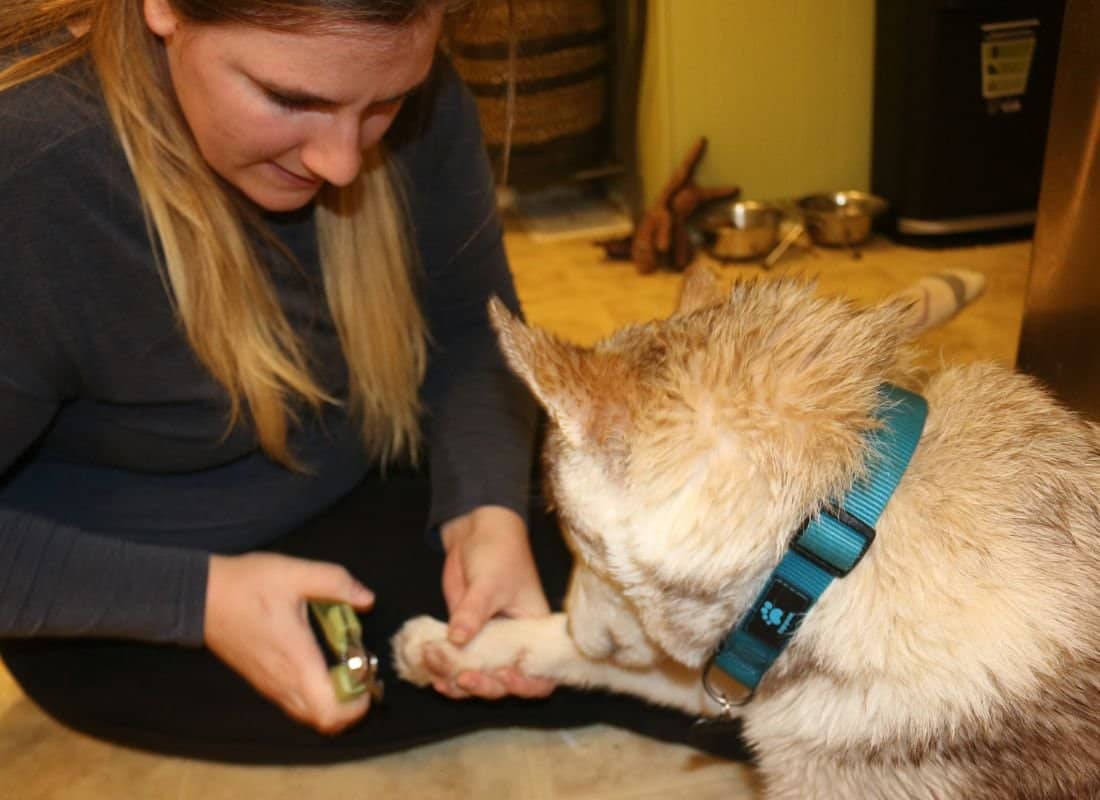A Guide to Dog Nail Care: Why, When, and How to Trim Your Dog’s Nails

Your dog’s nails might seem like a minor grooming concern, but proper nail care is critical for their health and comfort. In this comprehensive guide, we’ll explore everything you need to know about keeping your furry angel’s paws in perfect condition.
Why Nail Trimming Matters: Understanding the Risks of Overgrown Nails
Neglecting your dog’s nail care can lead to several serious problems:
Physical Issues
- Long nails force dogs to walk incorrectly, shifting their weight backward and straining their joints. This unnatural posture can lead to arthritis and chronic pain in the hips and spine
- Overgrown nails can curl and grow into the paw pads, causing severe pain and infection
- Split or cracked nails are more common when they’re too long, leading to painful bleeding
Behavioral Changes
- Dogs may become reluctant to walk or exercise
- They might show signs of discomfort like excessive licking of their paws
- Some dogs develop anxiety about walking on certain surfaces
- Activity levels may decrease, leading to weight gain and associated health issues
The Right Way to Trim: A Step-by-Step Guide
Essential Tools
- Quality nail clippers (either scissor-style or guillotine-type)
- Styptic powder for accidental bleeding
- Treats for positive reinforcement
- Good lighting or a headlamp
- Optional: nail file for smoothing rough edges
The Trimming Process
1. Preparation
- Choose a quiet, well-lit location
- Get your dog comfortable and relaxed
- Have treats ready for positive reinforcement
- Ensure all tools are within easy reach
2. 🛑Identify the Quick
- For light-colored nails: Look for the pink area (the quick)
- For dark nails: Look for the black dot in the center when viewing from the bottom
- Stay at least 2mm away from the quick when cutting
3. The Trimming Technique
- Hold the paw firmly but gently
- Cut at a 45-degree angle under the quick
- Make small cuts rather than taking off large chunks
- Praise and treat after each successful nail
Tips for Success
- Start with short sessions when your dog is calm
- Trim just a few nails at a time if your dog is nervous
- Use a nail file after clipping to smooth rough edges
- Consider having a professional demonstrate proper technique
When Professional Help is Needed
Sometimes, it’s best to seek professional help:
- If your dog is extremely anxious about nail trimming
- When the nails have become severely overgrown
- If you’re unsure about the proper cutting technique
- When dealing with dewclaws or unusually positioned nails
Creating a Maintenance Schedule
Establish a regular nail care routine:
- Check nails weekly for length and condition
- Most dogs need trimming every 2-4 weeks
- Active dogs who walk on concrete may need less frequent trimming
- Indoor dogs typically need more frequent nail maintenance
Signs Your Dog’s Nails Need Trimming
Watch for these indicators:
- Clicking sounds when walking on hard floors
- Visible curling of the nails
- Changed gait or posture
- Reluctance to walk on certain surfaces
- Frequent paw licking or chewing
Remember, consistent nail care is an investment in your dog’s long-term health and comfort. With patience and practice, nail trimming can become a stress-free part of your regular grooming routine.
Leave a Reply
You must be logged in to post a comment.
Leave a Comment